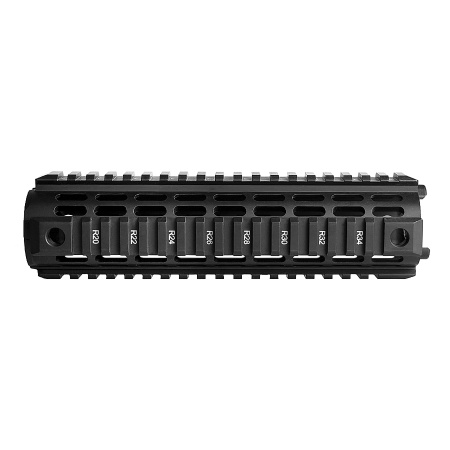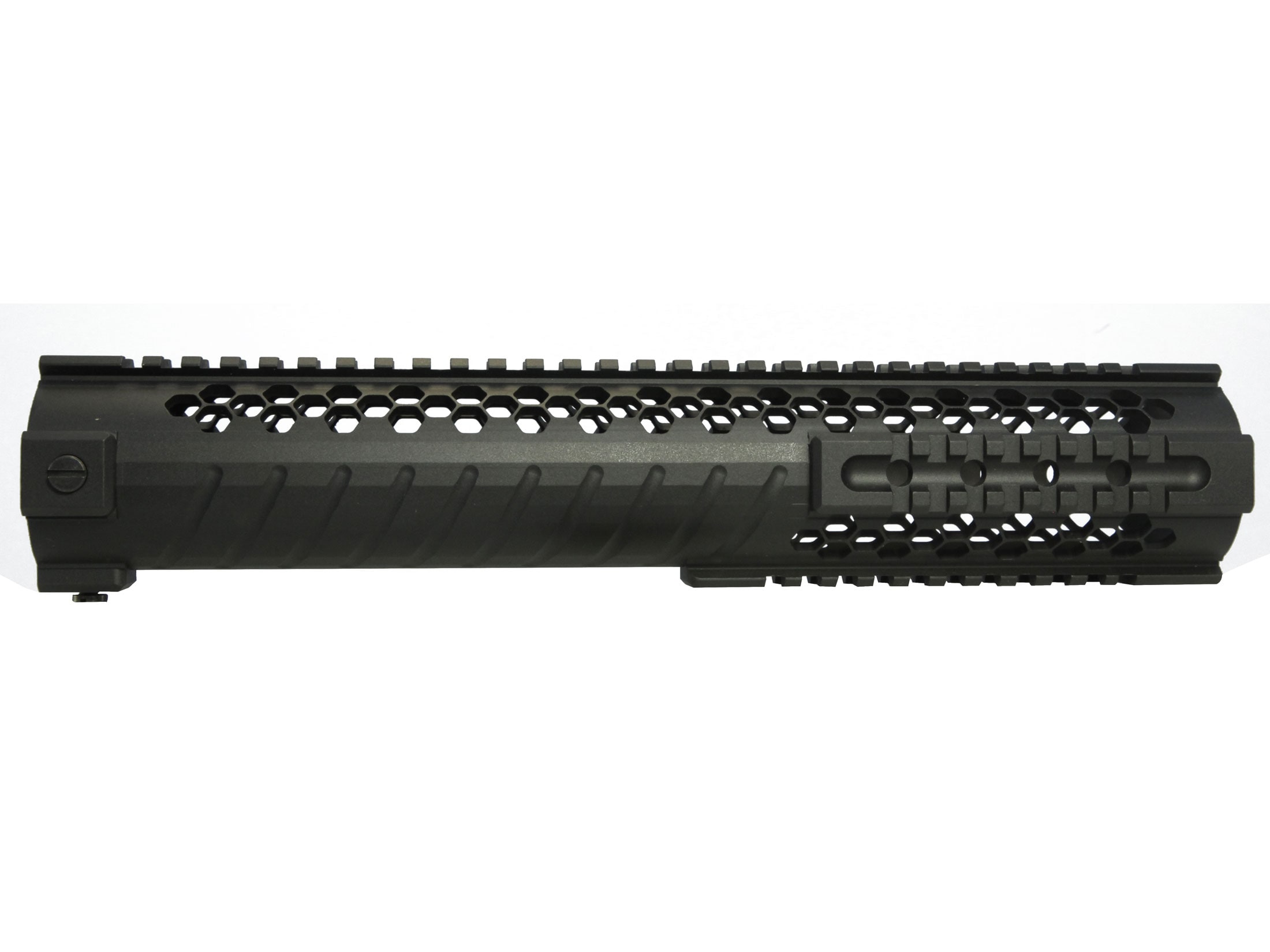

Furthermore, both categories are subdivided on the rail, and the non-railed handguards and finally, as the cherry on the cake, all of these types could be made either of all metal construction, or carbon fiber reinforced polymers. Moreover, the AR15 forends could be classified by its way of installation on a classic drop in (non-free-float design) and free-floating handguards which in turn allows further customization by defining the functionality and appearance of your rifle. Also, there is the newest and shortest pistol gas system usually found on AR-15 style pistols. As for the classification, the AR-15 Handguard can be determined by the length of the piston or operation rod systems on an AR15 rifle, so we have three standard AR handguard lengths which match to gas systems with the same names: rifle, mid-length, and carbine gas systems. There are hundreds of different versions which can improve rifle's comfort, versatility, or even enhance its accuracy potential. While the primary role of a AR Handguard is to protect shooters support hand from the heat of the barrel while firing, the AR15`s sleek and stylish appearance, the AR15 standard plastic handguards are bulky and clumsy making the rest of the AR look interrupted and incomplete. Anyway, the AR-15 handguards are one part that's easy to change, and it is also one of the most-changed parts on the rifle, and for most of the novices adding an aftermarket, the forearm is the first step in personalizing their AR-15 rifle. While the aftermarket offer is overwhelmed with the plethora of them ranging from the battle-proven to the true featherweight AR-15 handguards even the names can be confusing as the rifle's forend is usually called the handguard, forearm or foregrip.

Like many gun parts, the AR15 Handguard is as personal a choice as stocks, sights or pistol grips and in direct proportion with owner’s wants and needs. Binoculars, Monoculars & Spotting Scopes.


 0 kommentar(er)
0 kommentar(er)
